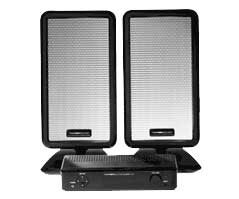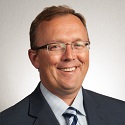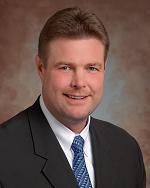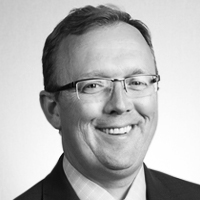HyperSound Solution for TV and Home Theaters Offers Benefits for People with Hearing Loss and Their Families
Carolyn Smaka: Rodney and Brian, thanks for your time today. Can you give me a company overview of HyperSound?

Rodney Schutt: Sure. HyperSound is a division of Turtle Beach Corporation, which was originally founded 40 years ago focusing on audio and electronics. Over the past decade, they became brand-recognized as a gaming headset company, and are now number one for market share in the United States and United Kingdom for gaming headsets.
Turtle Beach wanted to expand their offerings utilizing their knowledge and personnel, which included sound and acoustic engineers. Accordingly, Turtle Beach completed a merger/acquisition of Parametric Sound Corporation, which has since been rebranded as a division of Turtle Beach known as HyperSound.
HyperSound itself has two business lines. One is commercial, which sells products and services to the pro-audio industry. For example, you'll see HyperSound speakers integrated into the most recent Call of Duty Activision kiosk in about 1,000 stores in the United States.
The other business line is HyperSound Hearing Solutions. During the course of refining our technology we found that when some people with hearing loss were in the beam of HyperSound speakers, they were able to hear the words more clearly. This led us to pursue HyperSound technology for the hearing healthcare industry.
Turtle Beach set up HyperSound Hearing Solutions just over a year ago.
Carolyn: Tell me about HyperSound technology for people with hearing loss.
Rodney: We call the technology a directed audio solution. Directed audio solutions have been around for decades, but utilizing different technology. When you think about “audio” in its traditional nature, you think of a speaker vibrating and generating sound. Depending on the frequency, they all vibrate at a relatively high rate of speed and push sound throughout a space. The audio bounces off objects in its path before it ever reaches a human ear.
HyperSound uses a different technology. We use an ultrasonic carrier frequency. In the Hearing Solutions product set, the ultrasonic carrier frequency is approximately 100 kHz, or 100,000 Hz. We modulate audio in that carrier frequency. The result is a sound that travels along a highly directional path with minimal dispersion. The effect is completely immersive, almost like wearing headphones. With one step, a listener can enter or exit a beam of fully intelligible, crystal clear sound.

By beaming sound with similar precision to a flashlight, sound is directed towards the intended listener. Because audio can be tightly directed to a specific area it provides individuals in that area the benefit of audio with minimal disturbance to others. HyperSound® speakers deliver sound precisely, and consequently less volume is necessary to deliver sound where it is needed.
HyperSound's initial hearing solutions product, HyperSound Clear™, is focused on people with hearing loss and their families. Its intended use is with the home theater system and the TV, which allows the person with hearing loss to hear amplified, crystal clear sound, while the rest of the family enjoys listening to the TV at normal audio levels. And, the person with hearing loss can listen without headphones, neck loops or interface devices connected to the TV.
Carolyn: What were people's reactions to experiencing the product at AudiologyNOW! in San Antonio?
Rodney: Many people would come up and interface with our technology by sitting in the “hot seat” or they would get a demonstration at a kiosk. To be honest, they weren't sure what to expect. Many of the attendees didn't have a hearing loss, but their commentary after listening was how crystal clear the audio was, including any speech in the signal. Some said it was a clarity they had never experienced before.
The wonderful thing for us as a company delivering this technology is to see someone that has hearing loss and to ask them to sit in the beam and watch their face, because it's usually only seconds before a smile occurs.
When we did have attendees with hearing aids, I asked them to take their hearing aids out after they had already listened with them in. Most everyone that did could hear the words more clearly even without their hearing aids. That is the real joy. It's hard to put that into words.
We asked some attendees to close their eyes while listening. We asked, "Where is the sound coming from?" Many of them would say, "It's all around me. It's 360. It feels like I have headphones on. It's inside my head."
Carolyn: I noticed that when I stepped outside the beam it was like the sound disappeared.
Rodney: Yes, and that’s a real benefit.
When we ask family members about the first sign that a family member is starting to develop hearing loss, their response is, “The TV keeps getting louder and louder." Whether the person with hearing loss stops watching TV or moves to a different room to watch, it really does split families apart. People scatter to every end of the house when the person with hearing loss wants to watch TV, especially if that person does not use hearing aids.
We want to bring families back together in the home. With HyperSound Clear, people congregate again in the family room or the theater room in their home to enjoy entertainment at normal volume levels. The person sitting in the HyperSound beam controls his or her own volume. For the most part, the people that aren't in the beam don't hear anything except normal TV audio.
Carolyn: When will this product launch?
Rodney: Fall of 2015. We have a multi-generation product roadmap for this market. Our goal is to try and align with releases either around AudiologyNOW! or the European Union of Hearing Aid Acousticians (EUHA) congress meeting in the fall.
We will release in North America first and then in Europe shortly thereafter, followed by other regions across the world.
Carolyn: What are some of the important points about HyperSound Clear that audiologists should know?
Rodney: We went through the Food and Drug Administration (FDA) 510(k) process and received clearance over a year ago.
Secondly, we are targeting the traditional hearing health channels. We’ve made a commitment to the industry, our partners and our customers. That is our strategic launch perspective.
We know there are approximately 50 million people with hearing loss in America. Over the last 30 years, the penetration rate of the hearing aid industry has never surpassed 20 to 25 percent. From the first interaction a patient has with a hearing healthcare professional, it's seven years, on average, before they buy a hearing aid.
We are full proponents that the very best thing a hearing healthcare professional could do for a person with hearing loss is assist them in hearing aids, because hearing aids help in nearly every environment. However, we also know that when a patient makes that first appointment, survey data show that over 80 percent are there because they want help hearing the TV.
We have an incredible gateway product. The product works with hearing aids or without. People with severe hearing losses approaching profound still struggle with many of the other solutions available with hearing aids to be able to watch TV. Most of them will tell you that they still have to use the closed captions. It's a beautiful solution to marry those hearing aid wearers with HyperSound Clear. Every practice with satisfied hearing aid owners now has an effective solution that they can offer with the TV to that group of individuals. We believe that is another value proposition and revenue stream.
This is also an opportunity to offer the people who visit an audiologist but aren’t ready for hearing aids yet. Many of them go in looking for an entertainment solution to get them started on their journey.
Many of those individuals with hearing loss who don't have hearing aids can watch TV and hear the broadcast better. When they're outside the beam, they'll think, "You know what? I know what it's like to hear again, and I really struggle significantly when I'm not in the beam." We believe they will work their way back to that hearing healthcare advisor, and we'll shrink that five-to-seven-year window to purchase hearing aids to something much less.

Brian Taylor: As audiologists today, we have more to offer patients. This is a great way to grow the market and the footprint of your practice. Another point we should mention is that the product is programmable. The response can be programmed using fitting software on the screen or using a desktop app. You can transfer the patient’s audiogram into the app, and with a few clicks, optimize the amplifier for the patient’s hearing profile and preferences. It’s a simple way to customize the product to optimize speech intelligibility for the individual.
Carolyn: Tell me about the HyperSound Innovator Program.
Brian: As Rod mentioned, our strategy is to roll out HyperSound to all the traditional hearing healthcare channels. We launched the Innovator Program, which is accessible through our website. The Innovator Program allows people to sign up first, which becomes our prioritized list for rollout as soon as the product is available. Just 60 days into having the Innovator Program up and running, and we already have a number of people signed up.
Carolyn: It’s been great speaking with you both – thank you. Looking forward to catching up again when the product launches.
For more information, visit HyperSoundhearing.com or the HyperSound Expo Page on AudiologyOnline.



